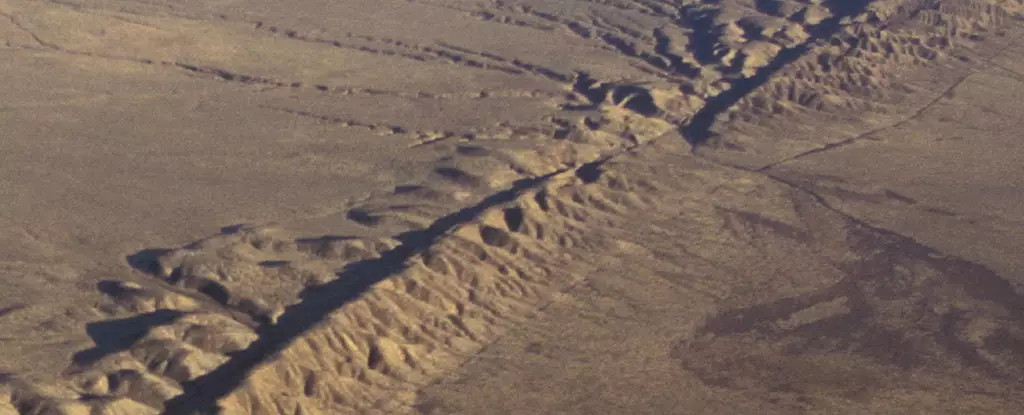Traditionally, earthquakes have been perceived as sudden, violent releases of energy—a catastrophic event that strikes without warning and leaves destruction in its wake. However, recent advances in geophysical research have begun to peel back this superficial understanding, revealing a more complex and nuanced picture. Slow slip earthquakes, or SSEs, challenge our perception of seismic activity as a binary phenomenon—either happening in a violent burst or not happening at all. Instead, these gradual processes unfold over days, weeks, even months, quietly shaping the stress landscape along fault lines. While seemingly benign and harmless at first glance, their significance lies precisely in their subtlety. They serve as geological whispers, offering clues about the larger, potentially disaster-inducing earthquakes lurking just beneath our feet.
What makes SSEs extraordinary is their ability to act as both a safety valve and a warning sign. As they slowly release accumulated stress, they may prevent the sudden build-up of tension that causes destructive quakes. Conversely, they might also, under certain conditions, build up stress in ways we do not fully understand. This duality means that ignoring slow earthquakes risks missing vital signals that could foretell a massive seismic event. For decades, scientists dismissed these gentle tremors as insignificant, yet now they recognize them as integral to the complex dance of tectonic plates.
Technical Breakthroughs and Their Impact on Earthquake Hazard Models
The recent breakthroughs achieved by teams like those at the University of Texas are nothing short of revolutionary. By deploying highly sensitive borehole sensors deep underwater near the Nankai Trough—a hotspot for seismic activity—they have captured SSEs in real-time, offering an unprecedented window into these delicate processes. Such technological advancements dismantle previous limitations; they enable scientists to detect ground shifts measured in mere millimeters, shaking off the false assumption that only violent quakes matter.
These data challenge long-held assumptions, suggesting that SSEs might regulate the build-up of stress that eventually culminates in a full-blown earthquake or tsunami. The discovery that high fluid pressures within fault zones might facilitate or hinder SSEs hints at a dynamic and fluid system where pressure plays a significant role in seismic risk. This understanding prompts a reevaluation of how we identify and interpret fault “quiet zones” versus active zones. It could lead the way toward more precise, localized predictions that move away from broad probabilistic forecasts to dynamic, real-time hazard assessments.
The Limitations, Challenges, and Controversy Surrounding SSE Monitoring
Despite these advances, the path to reliable earthquake prediction remains fraught with uncertainty. Installing sensitive, high-tech monitoring systems in seismically active zones is expensive and logistically challenging, often limited to well-studied regions like the Nankai Trough or Cascadia. Moreover, the interpretation of SSE data is complex; the presence of slow slip events does not guarantee an imminent large quake, nor does their absence necessarily mean safety. The unpredictable nature of fault systems continues to confound scientists.
Critics argue that overreliance on SSE data may lead to false alarms or complacency—either underestimating the risk if slow slips are misunderstood or causing unwarranted panic if misinterpreted. The tectonic environment is inherently chaotic, and the current understanding is perhaps too optimistic about the predictive power of these gentle tremors. Still, the potential benefits—more accurate early warning systems and better-informed disaster preparedness—make the pursuit worthwhile. If harnessed wisely, SSE monitoring can serve as a critical piece in the complex puzzle of seismic resilience, but it should never be mistaken as a crystal ball.
The Implications of SSE Research for Our Future Safety
In a broader societal context, these scientific developments emphasize the need for sustained investment in earthquake research and infrastructure. They reveal a seismic landscape that is more interconnected and dynamic than previously thought. Saintly calmness in fault zones could be a double-edged sword—signaling either peace or building silent danger beneath. The challenge for policy-makers and scientists is to balance this delicate knowledge with practical preparedness, acknowledging the limitations of our current science while pushing the boundaries of understanding.
Moreover, SSEs underscore the importance of community resilience and adaptive infrastructure design, especially in fault-prone regions like Japan, North America, and the Pacific Ring of Fire. While technology edges closer to providing reliable warnings, it must be complemented by social policies that protect lives and property from inevitable surprises. In this light, slow earthquakes are not just geological phenomena—they represent a paradigm shift in how humanity approaches the eternal threat of tectonic upheaval: as a challenge that is partially silent but deeply consequential.


Leave a Reply